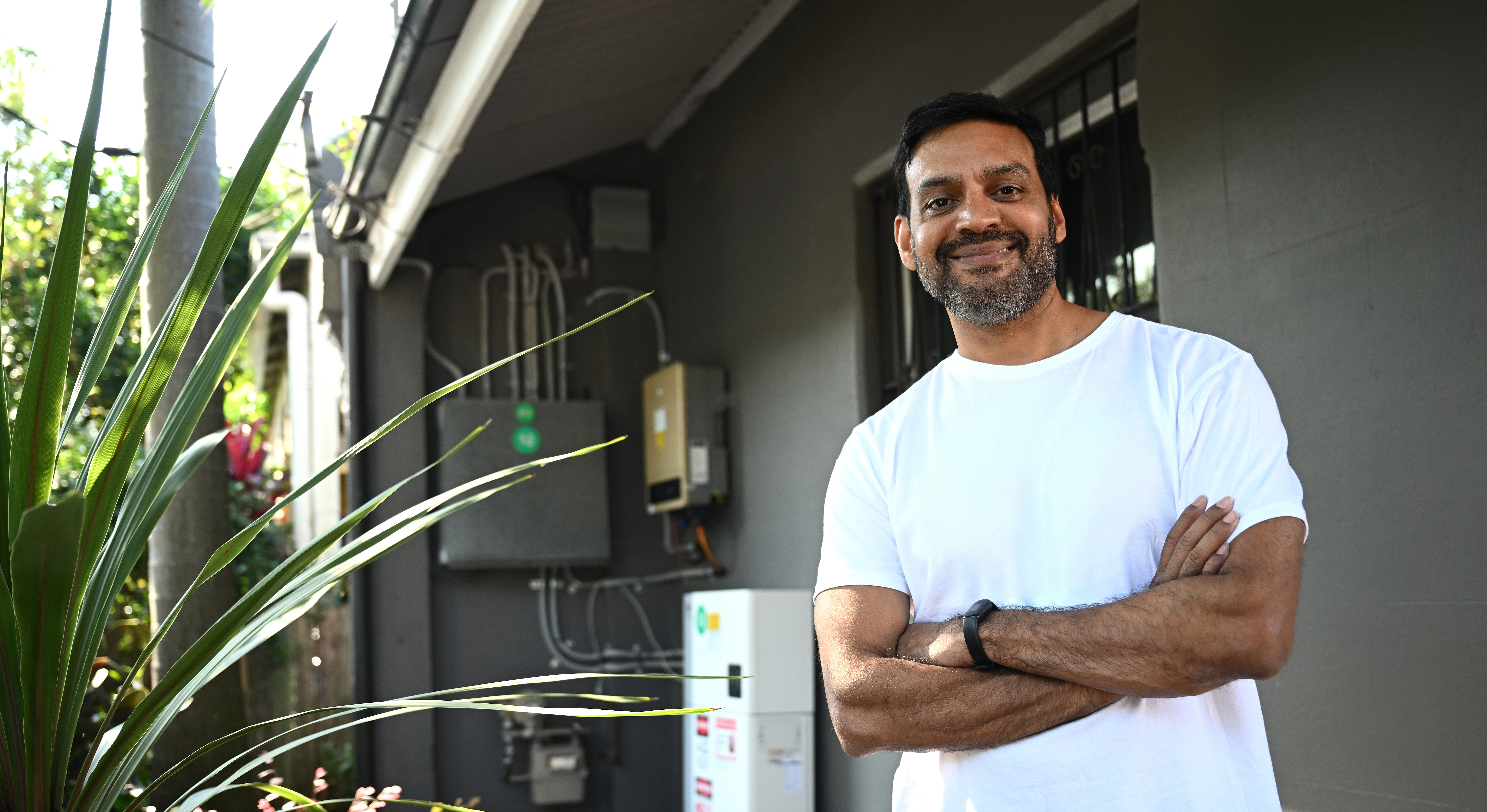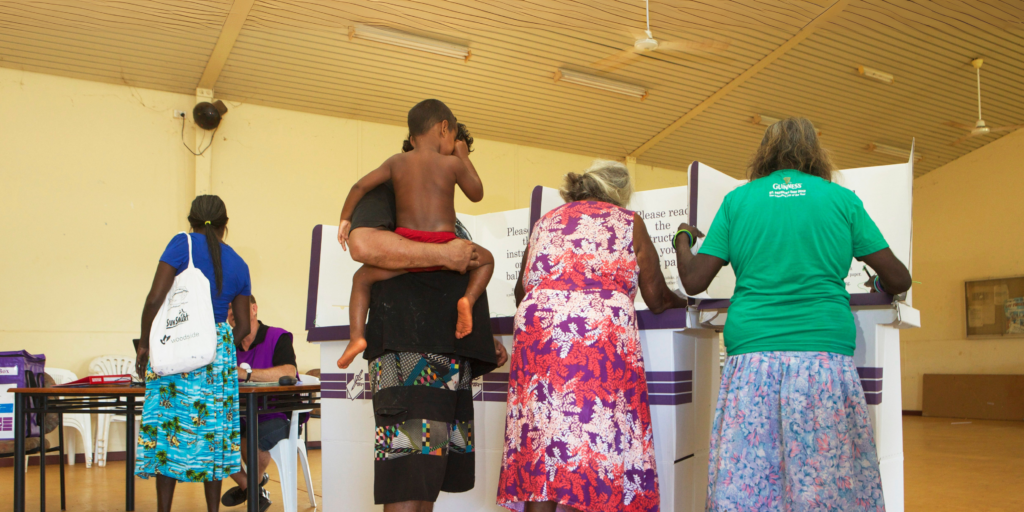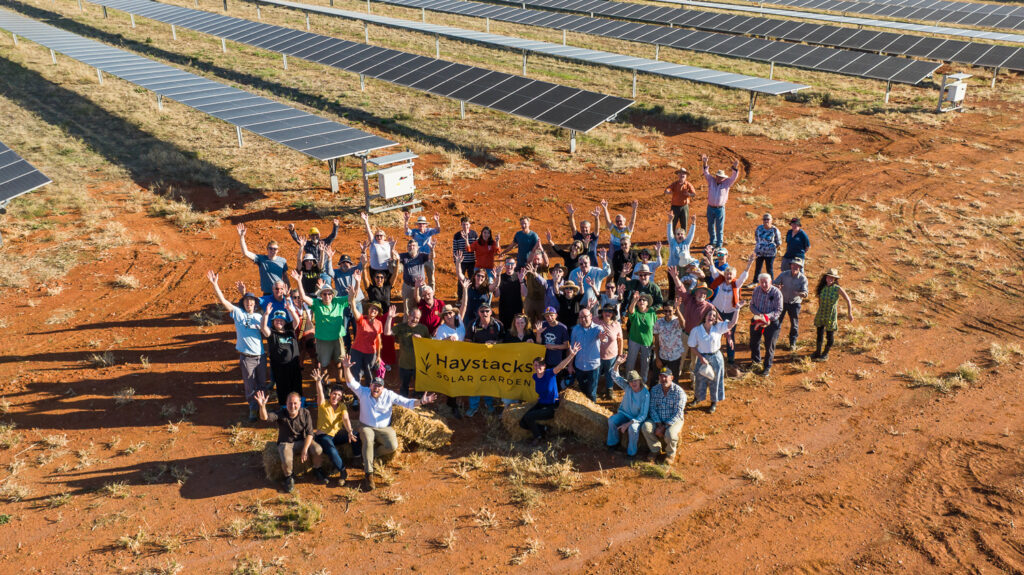At the ballot box this year, Australians voted for a future powered by renewables and storage. Our country is well known for setting, and smashing, records when it comes to renewable energy. Today, about 40 per cent of our power now comes from wind, solar and hydro energy. Batteries are the next frontier when it comes to cutting our bills as quickly as we can cut climate pollution.
Australia’s battery opportunity
Since building our first grid-scale battery in 2017 in record time, and making international headlines, we have added another 33. There’s also more than 20 gigawatts of big battery storage in the pipeline; almost double what was planned just a year ago. In neighbourhoods all over the country, hundreds of community-scale batteries are being installed. Plus, an estimated 300,000 Aussies have added a battery to their rooftop solar at home.
As costs rapidly fall and technologies improve, battery storage of all kinds is set to boom across Australia as we benefit from bill savings, further cuts to climate pollution and a more reliable grid. Our analysis shows more than two million batteries can be added at a household level, which would
collectively save Australians more than $4 billion a year on their power bills.
Homes with batteries are seeing the benefits first-hand: a home battery can almost double the power bill savings for homes with rooftop solar, up to $2300 a year, or 90 per cent of a typical family power bill. Since coming onto the market in 2015, more than 300,000 households have added a battery. Unlike one-off energy rebates, home batteries permanently bust power bills and slash climate pollution. They also ease demand on the grid in peak times and reduce the need for more transmission, putting downward pressure on power bills for everyone. As communities across Australia experience more frequent and intense climate-fuelled disasters, batteries can keep our homes, businesses and communities going even when power supply is disrupted.
As the world’s top producer of lithium, both the public and private sectors are already investing significantly to unlock this economic opportunity and create more local jobs by manufacturing and reprocessing batteries here in Australia.
With so much work already underway to power Australia with cheaper and cleaner renewables and storage, now is the time to build on this momentum and ramp up battery storage to match our world-leading rates of rooftop solar. With targeted policies, we can make the most of this enormous opportunity.
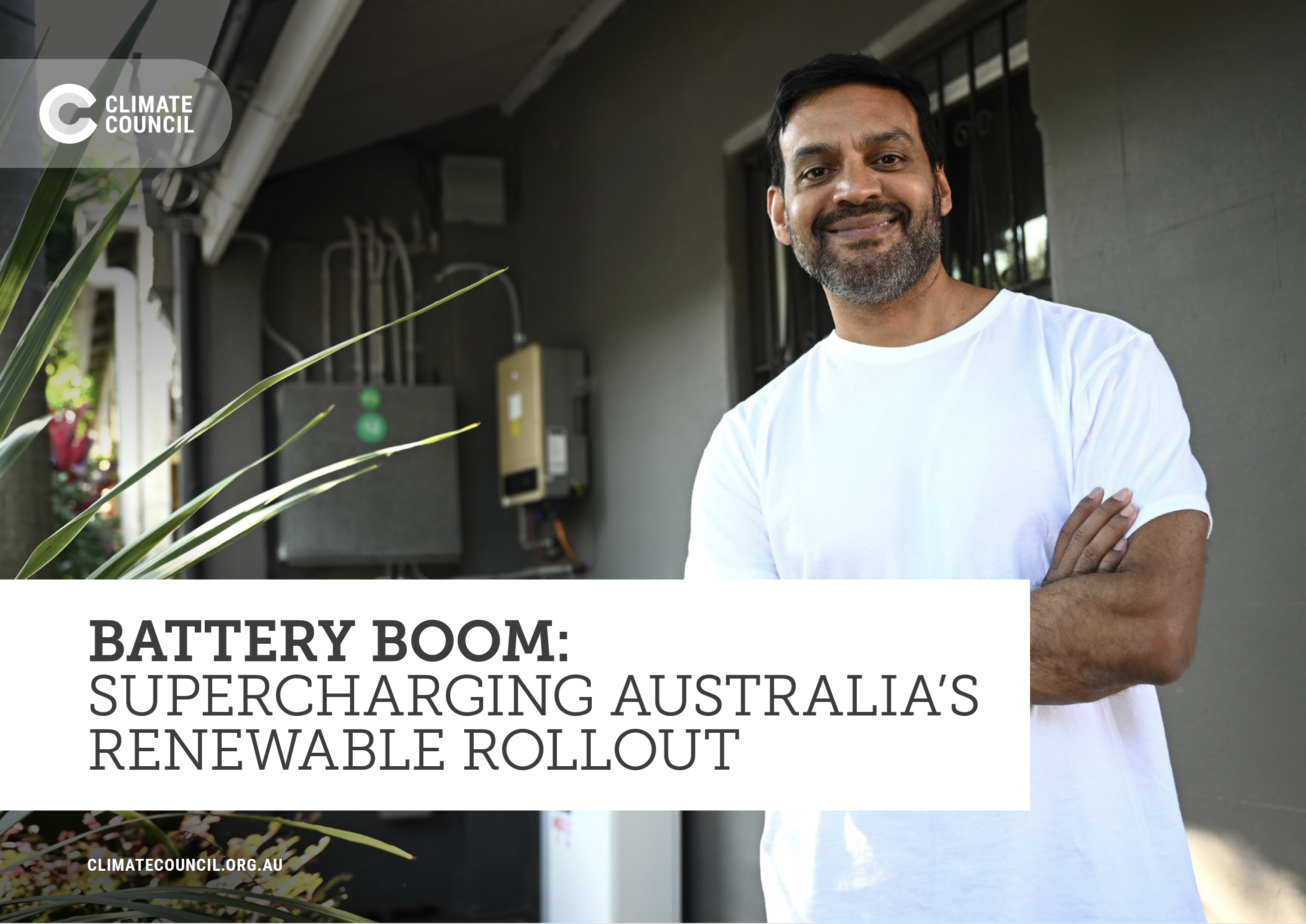
Key Findings
1. Rooftop solar and batteries are a permanent bill buster, and Australians can collectively save more than $4 billion on their power bills every year if we install two million more batteries in our homes and businesses by 2030.
- There is enormous potential to roll out more home batteries, with 8 per cent of the four million Australian households with solar currently storing their excess solar power with a battery.
- Pairing a battery with rooftop solar almost doubles a household’s savings: up to $2300 less per year on power bills for the average family, compared to $1500 in savings with solar only.
- Climate Council’s analysis shows that with additional policies, we can add two million batteries to households and businesses by 2030. If we do so, that would collectively save Australians more than $4 billion on their power bills each year.
- Households could boost their savings even more by using the battery in an electric vehicle (EV) to store power and send it back to the grid using vehicle-to-grid technology, cutting out their petrol or diesel costs by around $2000 a year.
2. Australia is on the brink of a battery boom. Solar is already more common in our suburbs than the backyard pool, and the potential for storage in the outskirts of our cities is also enormous.
- Overall, our battery storage capacity has more than doubled within the past three years to more than 3 gigawatts (GW).
- South Australia is smashing it across the board with battery installations at all scales, while Western Australia now has more big batteries than any other state or territory. Meanwhile, the Northern Territory leads the way in the highest proportion of homes with solar and a battery, and Victoria takes the medal for the most community-scale batteries.
- Nationally, we will need 49 GW of battery and pumped hydro storage by 2050 – or more than 15 times our existing battery storage capacity – made up of household batteries, community-scale batteries, big batteries and pumped hydro.
- The top three spots nationally for home battery potential are Tarneit in Victoria, and Bundaberg and Hervey Bay in Queensland – together, these suburbs have enormous battery potential with more than 64,000 rooftop solar systems.
- Vehicle-to-grid technology is a transformative opportunity that can turn our suburbs into mobile storage centres. By connecting EVs to our homes and the grid we could unlock more battery capacity than any other form of storage.
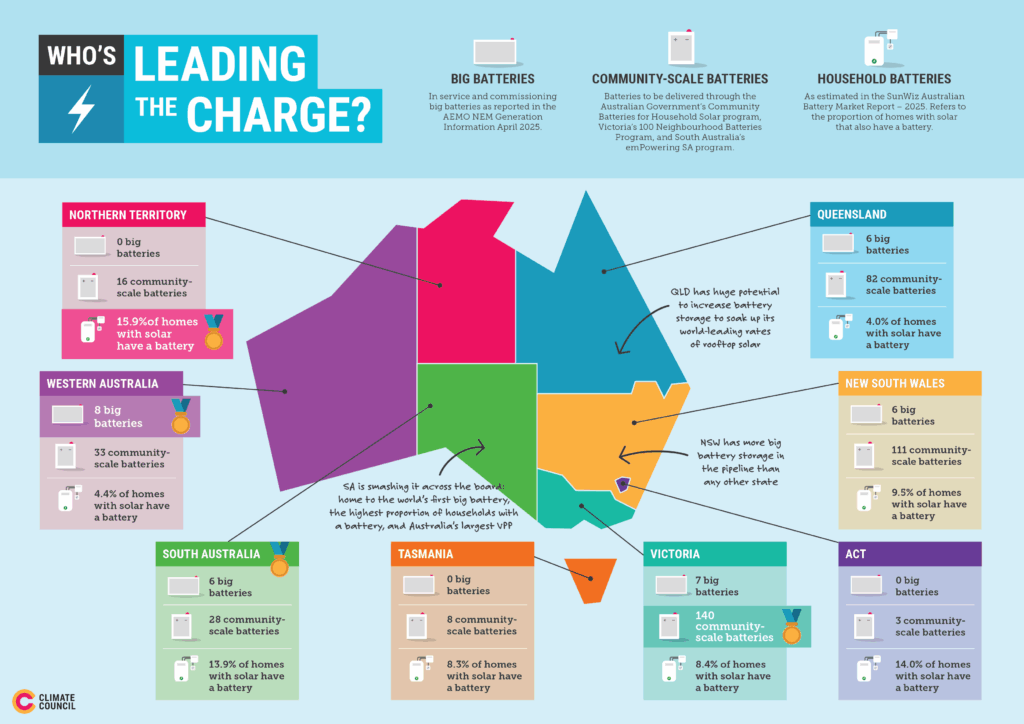
3. Batteries are getting cheaper and better at breakneck speed making them accessible and feasible for more Australians.
- Globally, battery prices have fallen 86 per cent since 2013. This is mostly due to a significant drop in lithium prices, which is a key material in most batteries.
- In 2024-25, the upfront cost of big batteries fell 20 per cent. In contrast, the cost of gas generation jumped up 11 per cent over the same period.
- On average, it is expected to take an Australian 8.3 years to recover the cost of purchasing a battery (as of 2024), down from a 10-year “payback period” in 2022, and 19 years in 2016. This is expected to drop further as demand grows and technology improves. Federal rebates may accelerate this trend.
- In the eight years since we switched on our first big battery (Hornsdale in South Australia in 2017) we have added 33 more, on top of more than 300,000 home batteries and 500 community-scale batteries.
- In our main grid, batteries can make up 5 per cent of our power supply at high-demand times. In some parts of the country, batteries are already powering up to 30 per cent of demand (in South Australia) and 20 per cent of demand (in Western Australia) with records regularly set and broken for how much energy batteries are both charging and discharging.
4. Batteries not only help cut climate pollution and save families money on power bills, but also make our electricity system more reliable as climate change accelerates.
- Backed up by storage, renewable generation not only keeps electricity more reliable and affordable, it also protects Australians against international price shocks caused by volatility in the coal, oil and gas markets.
- Home batteries and the batteries in EVs are already coming to the rescue of Australian communities by powering essential services and appliances when power supply is disrupted in severe weather events like fires, storms and floods that are accelerating due to climate pollution.
- Batteries in microgrids are helping remote communities switch away from fossil fuels like diesel, and giving them more control over their energy.
5. As the climate crisis unfolds all around us, the race is on to cut climate pollution further and faster this decade. Batteries are a key solution and present a major economic opportunity for Australia.
- Climate pollution is already increasing the frequency and intensity of extreme weather events across the country: 80 per cent of Australians have experienced some form of disaster in recent years.
- We need to cut climate pollution rapidly this decade by getting off coal and gas. Batteries will unlock Australia’s renewable potential as our energy system transforms and ensure we have reliable access to clean power whenever we need it.
- With global lithium demand set to increase more than 10-fold between now and 2040 our lithium resources offer significant economic opportunities, including job creation, technological advancements, and enhanced energy security.
- Although Australia produces around half of the world’s lithium, we export nearly all of it. We can create more local jobs and economic value by manufacturing batteries here at home.
- Governments can spread the benefits of rooftop solar across our community by ramping up all types of batteries and helping Australians access vehicle-to-grid technology.

